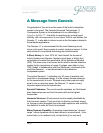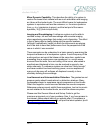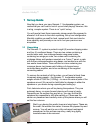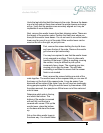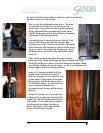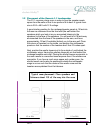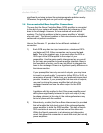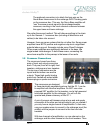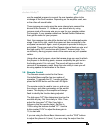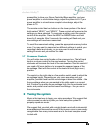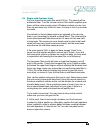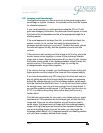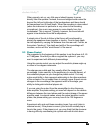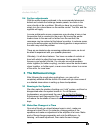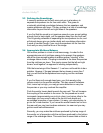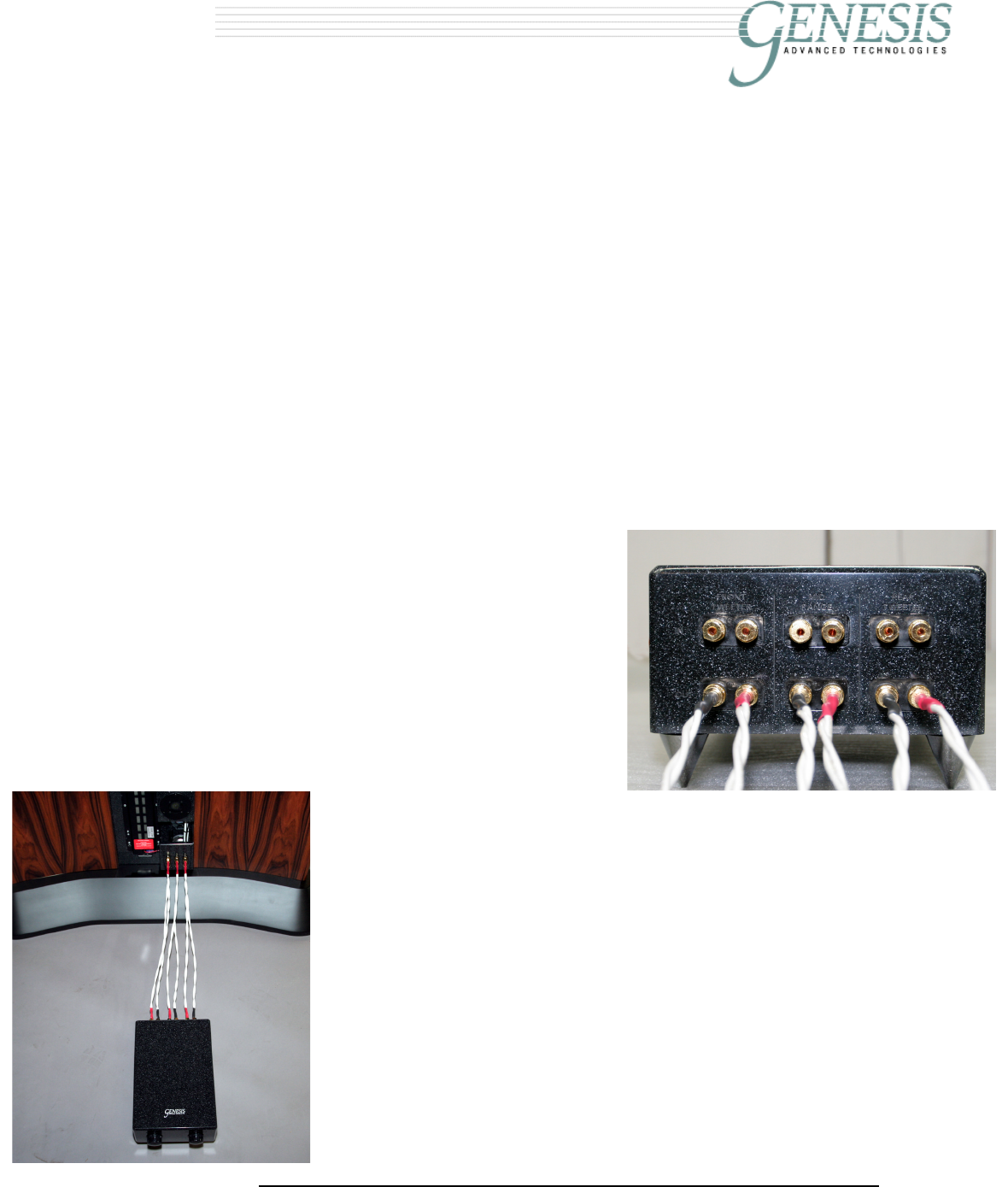
Ver 2.0
11
1111
11
~ÄëçäìíÉ=ÑáÇÉäáíó
The preferred connection is to attach the bare wire on the
Servo-Bass Interconnect to the midrange INPUT binding posts
on the crossover box. This way, the Servo-Bass amplifier will
“see” the same musical signal as the midrange/tweeter
crossover, resulting in the most coherent crossover between
the upper bass and lower midrange.
We prefer the second method. This will allow everything in the chain
up to the Genesis 1.1 crossover box (including all electronics and
cables) to be taken into account.
However, there are some systems that do not allow this. Some power
amplifiers have BOTH positive and negative outputs at a significant
potential above ground. Examples include some Class D designs.
Other power amplifiers are significantly deficient in the bass, like
single-ended triode designs. In both these cases, connecting the
servo-bass amplifier to the preamp is the lesser of two evils.
1.5 Crossover Connections
The cross-over boxes have three
pairs of input and output connectors
each. They are (from left to right) front
tweeters, midrange and rear tweeters.
The top row of connectors are the
inputs and the bottom row are the
outputs. These high quality binding
posts from Cardas will accept either
banana plugs or spade connectors.
The crossovers are designed
in three electrically separated parts so that the G1.1 can be
tri-amplified with identical amplifiers. Do NOT use a low-
powered SET amplifier for the tweeters, and a high-powered
solid-state amplifier for the midrange. You will ruin the
spectral and phase coherency of the G1.1.
A pair of jumpers with banana plugs at one end and spade
connectors at the other end are provided to get you started if
you only have a single channel of amplification. In that case,
use your speaker wires to connect to the midrange input (the
middle) and the jumpers to connect to the front and rear
tweeters.
With two channels of amplification, run one channel on the
midrange, and the other channel on the front tweeters. Then



